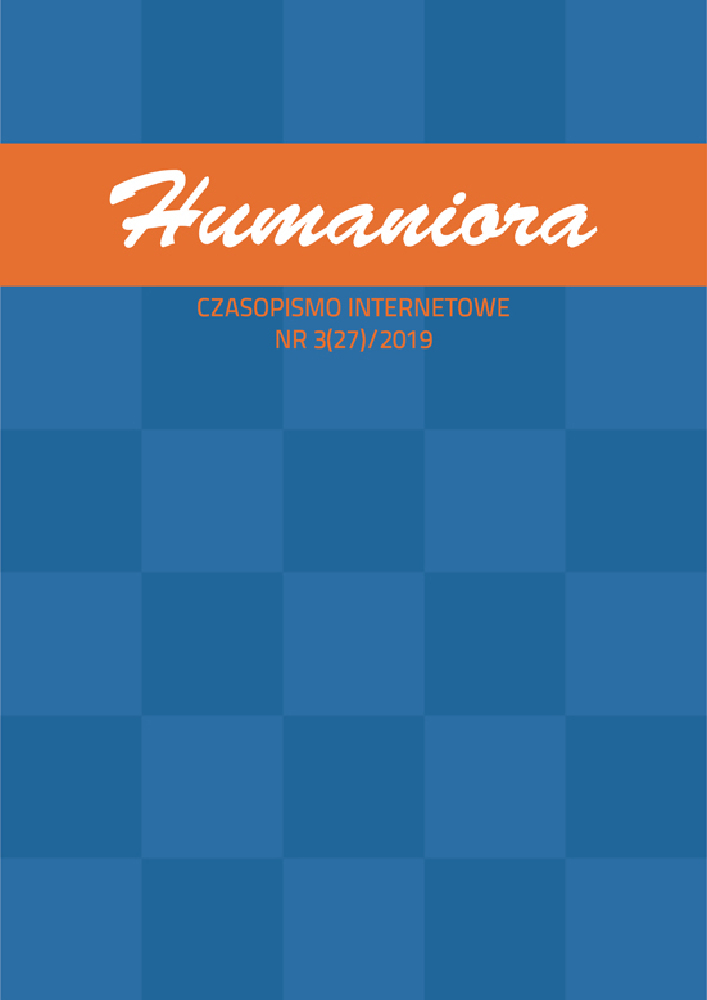Abstrakt
Argumentum ad absurdum, as a way of thinking or acting which is pointless from the point of view of rationality and predictability of a human’s action, is intentionally planned in order to justify the uniqueness and thus veracity of the existence of something compared to commonly accepted standards of behaviour. The universality of these standards is questioned by introducing factors that go beyond the patterns of commonly accepted standards. In the Bible, there are also absurd situations from the point of view of human predictability which are directly attributed to God. This absurdity of God’s action, in comparison to the rights guiding pagan religions and the rationally accepted human behaviour strengthens the faith in His existence. Going beyond the area of “normalcy” proves in the strongest way that these facts, which are seemingly at variance with logical thinking, are indeed true. These facts are paradoxically a strong and durable foundation of the Christian faith.
Bibliografia
Anati E., The Question of Fertility Cults, w: Archaeology and Fertility Cult in the Ancient Mediterranean, Papers Presented at the first International Conference on Archaeology of the Ancient Mediterranean, University of Malta, 2–5 September 1985, A. Bonanno (red.), B.R. Grüner Publishing Company, Amsterdam 1986.
Block D.I., The Gods of the Nations: A Study in Ancient Near Eastern National Theology, Wipf et Stock, Eugene 2013.
Blomberg C. L., Matthew. An Exegetical and Theological Exposition of Holy Scripture, New American Commentary 22, Broadman Press, Nashville 1992.
Brzegowy T., Księga Izajasza. Rozdziały 1–12, Nowy Komentarz Biblijny: Stary Testament 22/1, Edycja Świętego Pawła, Częstochowa 2010.
Christensen D. L., Deuteronomy 1:1 – 21:9, Word Biblical Commentary 6A, Word Books Publisher, Dallas 2001.
Frymer-Kensky T., Tit for Tat: The Principle of Equal Retribution in Near Eastern and Biblical Law, „The Biblical Archaeologist” 4(43)/1980.
Goldingay J., Psalms. Vol. 2: Psalms 42–89, Baker Commentary of the Old Testament: Wisdom and Psalms, Baker Academic, Grand Rapids 2007.
Halpern B., The Centralization Formula in Deuteronomy, Vetus Testamentum 31/1981.
Hoffmeier J. K., Akhenaten and the Origins of Monotheism, Oxford University Press, Oxford 2015.
Hornung E., Jeden czy wielu? Koncepcja Boga w starożytnym Egipcie, tłum. A. Niwiński, Wydawnictwo Naukowe PWN, Warszawa 1991.
Jackson B. S., Problem of Exod 21:22–25 (Ius Talionis), Vetus Testamentum 23/1973.
Jüngling H.-W., Auge für Auge, Zahn für Zahn: Bemerkungen zu Sinn und Geltung der alttestamentlichen Talionsformeln, Theologie und Philosophie 59/1/1984.
Lemański J., Księga Rodzaju, rozdziały 1–11. Wstęp – przekład z oryginału – komentarz, Nowy Komentarz Biblijny: Stary Testament, t. I/1, Edycja Świętego Pawła, Częstochowa 2013.
Merrill E.H., Deuteronomy. An Exegetical and Theological Exposition of Holy Scripture, New American Commentary 5, Broadman Press, Nashville 1994.
Mickiewicz F., Ewangelia według Świętego Łukasza, rozdziały 12–24, Nowy Komentarz Biblijny: Nowy Testament, t. III/2, Edycja Świętego Pawła, Częstochowa 2012.
Moore C.A., Daniel, Esther and Jeremiah: The Additions. A New Translation with Introduction and Commentary, The Anchor Bible 44, Harvard University Press, New Heaven – London 2010.
Mounce R. H., Romans. An Exegetical and Theological Exposition of the Holy Scripture, New American Commentary 27, Broadman Press, Nashville 1995.
Oppenheim A.L., Ancient Mesopotamia: Portrait of a Dead Civilization, University of Chicago Press, Chicago – London 1977.
Paciorek A., Ewangelia według świętego Mateusza. Wstęp – przekład z oryginału – komentarz, Nowy Komentarz Biblijny: Nowy Testament, t. I/1, Edycja Świętego Pawła, Częstochowa 2008.
Propp W.H.C., Exodus 19–40. A New Translation with Introduction and Commentary, The Anchor Bible 2A, Doubleday, New York i in. 2006.
Reuter E., Kultzentralisation: Entstehung und Theologie von Dtn 12, Athenä ums Monografien, Bonner Biblische Beiträge 87, Anton Hain, Bonn 1993.
Sasson J. M., Theologies, Priests and Worship in Ancient Mesopotamia, w: Civilizations of the Ancient Near East, t. 1, J.M. Sasson (red.), Charles Scribner’s Sons, New York 1995.
Stanek T., Jahwe a bogowie ludów. Idee religijne wczesnego Izraela na tle wierzeń ludów Egiptu, Mezopotamii i Kanaanu, Biblioteka Pomocy Naukowych 23, Redakcja Wydawnictw Wydziału Teologicznego UAM, Poznań 2002.
Stein R. H., Luke. An Exegetical and Theological Exposition of Holy Scripture, New American Commentary 24, Broadman Press, Nashville 1992.
Stuart D., Hosea – Jonah, Word Biblical Commentary 31, Word Books Publisher, Dallas 1987.
Stuart D. K., Exodus. An Exegetical and Theological Exposition of Holy Scripture, New American Commentary 2, Broadman Press, Nashville 2006.
Swartley W.M. (red.), The Love of Enemy and Nonretaliation in the New Testament, Westminster/John Knox Press, Louisville 1992.
Toorn van der K., The iconic Book: Analogies between the Babylonian Cult of images and the Veneration of the Torah, w: The Image and the Book: Iconic Cults, Aniconism, and the Rise of Book Religion in Israel and the Ancient near East, K. ven der Toorn (red.), Peeters, Leuven 1997.
Walker C., Dick M. B., The Induction of the Cult Image in Ancient Mesopotamia: The Mesopotamian mrs pi Ritual, w: Born in Heaven, Made on Earth: The Making of the Cult Image in the Ancient Near Eeast, M.B. Dick (red.), Eisenbrauns, Winona Lake 1999.
Licencja
Czasopismo oraz wszystkie zamieszczone w nim materiały są powszechnie dostępne i mogą być wykorzystywane do celów naukowych, edukacyjnych, poznawczych i niekomercyjnych bez konieczności uzyskiwania każdorazowej zgody autorów i redakcji. Nadesłanie artykułu do publikacji traktowane jest jako zgoda autora na udostępnienie swojej pracy i informacji w niej zawartych do powyżej wymienionych celów. W takich przypadkach należy jedynie wskazać źródło, z którego zaczerpnięte zostały informacje. Pobieranie opłat za dostęp do materiałów zawartych w czasopiśmie lub ograniczanie do niego dostępu jest zabronione.
Przesyłane do redakcji teksty muszą stanowić oryginalne prace, uprzednio nigdzie niepublikowane ani nie przedkładane innym redakcjom lub wydawcom. Autorzy nadsyłanych artykułów ponoszą odpowiedzialność za uzyskanie zezwoleń na publikowanie materiałów, do których prawa autorskie są w posiadaniu osób trzecich. Publikacja materiałów chronionych prawem autorskim jest możliwa pod warunkiem uprzedniego dostarczenia przez autora do redakcji pisemnej zgody właściciela praw autorskich.





